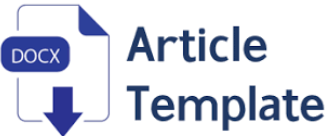Assessment Literasi Sains Dimensi Kompetensi pada Materi Pamanasan Global
DOI:
https://doi.org/10.46368/qjpia.v1i1.314Abstract
Abstract: The purpose of this study is to describe the scientific literacy ability of the competency dimension in the material of global warming class XI MIPA and XI IIS. This research uses quantitative methods with descriptive analysis techniques. The research sample was 30 students of class XI MIPA and 30 students of class XI IIS at Bhakti Setia Nanga Pinoh High School in the 2019/2020 school year. The research instrument used was a scientific literacy test taken from the book Take the Test: Sample Question from the OECD's PISA Assessment. The results of the analysis show the scientific literacy ability of the competency dimension in class XI MIPA with the highest percentage achievement being the indicator explaining the potential implications of scientific knowledge for the community by 63% and the lowest achievement being the indicator identifying the questions discussed in a scientific study by 37%. Whereas the scientific literacy ability profile of the competency dimension in class XI IIS with the highest percentage achievement was in the indicators drawing conclusions based on data with a percentage of 43% and the lowest achievement was in the indicator explaining how to explore the questions scientifically given by 23%. Thus, the need for learning and evaluation processes based on scientific literacy assessment of competency dimensions.
Keywords: Scientific literacy, assessment, competence, global warming
Abstrak: Tujuan dari penelitian ini adalah mendeskripsikan kemampuan literasi sains dimensi kompetensi pada materi pemanasan global kelas XI MIPA dan XI IIS. Penelitian ini menggunakan metode Kuantitatif dengan teknik Analisis Deskriptif. Sampel penelitian adalah 30 siswa kelas XI MIPA dan 30 siswa kelas XI IIS di SMA Bhakti Setia Nanga Pinoh pada tahun ajaran 2019/2020. Instrumen penelitian yang digunakan adalah soal tes literasi sains yang diambil dari buku Take the Test: Sample Question from the OECD's PISA Assessment. Hasil analisis memperlihatkan kemampuan literasi sains dimensi kompetensi pada kelas XI MIPA dengan capaian persentase tertinggi berada pada indikator menjelaskan implikasi potensial pengetahuan ilmiah bagi masyarakat sebesar 63% dan capaian terendah berada pada indikator mengidentifikasi pertanyaan yang dibahas dalam sebuah penelitian ilmiah sebesar 37%. Sedangkan profil kemampuan literasi sains dimensi kompetensi pada kelas XI IIS dengan capaian persentase tertinggi berada pada indikator menarik kesimpulan berdasarkan data dengan persentase sebesar 43% dan capaian terendah berada pada indikator menjelaskan cara mengeksplorasi pertanyaan yang diberikan secara ilmiah sebesar 23%. Dengan demikian, perlu adanya proses pembelajaran dan evaluasi berbasis assessment literasi sains dimensi kompetensi.
Kata-kata kunci: Literasi sains, assessment, kompetensi, pemanasan global
References
AAAS. (1993). Benchmarks for science literacy project 2061. Oxford: Oxford University Press.
Firman, H. (2007). Laporan analisis literasi sains berdasarkan hasil PISA nasional tahun 2006. Jakarta: Pusat Penliaian Pendidikan Balitbang Depdiknas.
Fives, H., Huebner, W., Birnbaum, A.S., & Nicolich, M. (2014). Developing a measure of scientific literacy for middle school students. Science Education, 98(4), 549-580.
Lin, Hong & Huang. (2011), The role of emotional factors in building public scientific literacy and engagement with science. International Journal of Science Education, 34(1), 1-18.
Mawardini, A., Permanasari, A., & Sanjaya, Y. (2015). Profil literasi sains siswa SMP pada pembelajaran IPA terpadu tema pencemaran lingkungan. Prosiding Seminar Nasional Fisika (E-Journal).
OECD. (2016). PISA 2015 Assessment and analytical framework: Science, reading, mathematic and financial literacy. PISA, OECD Publishing: Paris.
OECD. (2013). PISA 2015 draft science. PISA, OECD Publishing: Paris.
OECD. (2016). PISA 2015 Take the test: Sample question from OECD’s PISA assessment. PISA, OECD Publishing: Paris.
Osborne, J. (2010). Arguing to learn in science: The role of collaborative, critical discourse. science, 328(5977), 463-466.
Pantiwati & Husamah. (2014). Analisis kemampuan literasi sains siswa SMP Kota Malang. Prosiding Konferensi Ilmiah Tahunan Himpunan Evaluasi Pendidikan Indonesia (HEPI) Tahun 2014, Kuta.
Pranoto, I. (2013). Guru Merdeka. Kompas, hal. 7.
Rizkita, L., Suwono, H., & Susilo, H. (2016). Analisis kemampuan awal literasi sains siswa SMA Kota Malang. Prosiding Seminar Nasional II Tahun 2016.
Rustaman, N. Y. (2006). Literasi Sains Anak Indonesia 2000 & 2003. Makalah Literasi Sains 2003.
Shwartz, Y., Ben-Zvi, R., & Hofstein, A. (2006). The use of scientific literacy taxonomy for assessing the development of chemical literacy among high-school students. Chemistry Education Research and Practice, 7(4), 203-225.
Sudiatmika, A. A. Wife Rai. (2010), Pengembangan alat ukur tes literasi sains siswa SMP dalam konteks budaya Bali. (Disertasi). Sekolah Pascasarjana, Universitas Pendidikan Indonesia, Bandung.
Wikipedia. (2015). Scientific literacy. Retrieved from http://en.wikipedia.org/wiki/Scientific_literacy.
Yusuf, S. (2003). Literasi siswa Indonesia laporan PISA 2003. Retrieved from http://www.p4tkipa.org.
Downloads
Published
How to Cite
Issue
Section
Citation Check
License
Penulis yang menerbitkan jurnal ini menyetujui persyaratan berikut:
Penulis memiliki hak cipta dan memberikan hak jurnal untuk publikasi pertama dengan karya yang secara simultan dilisensikan di bawah Lisensi Atribusi Creative Commons yang memungkinkan orang lain untuk berbagi karya dengan pengakuan kepengarangan karya dan publikasi awal dalam jurnal ini.
Penulis dapat membuat perjanjian kontrak tambahan yang terpisah untuk distribusi non-eksklusif versi jurnal yang diterbitkan dari karya tersebut (misalnya, mempostingnya ke repositori institusional atau menerbitkannya dalam sebuah buku), dengan pengakuan atas publikasi awalnya di jurnal ini.
Penulis diizinkan dan didorong untuk memposting pekerjaan mereka secara online (mis., Dalam repositori institusional atau di situs web mereka) sebelum dan selama proses pengiriman, karena dapat menyebabkan pertukaran yang produktif, serta kutipan yang lebih awal dan lebih besar dari karya yang diterbitkan.





